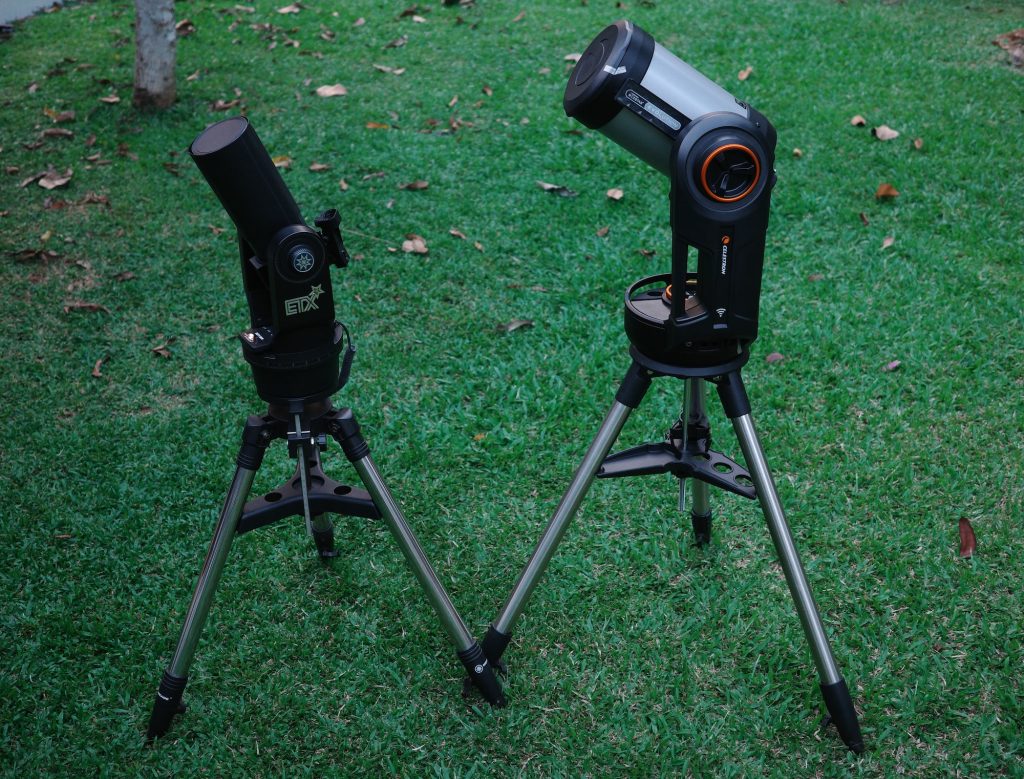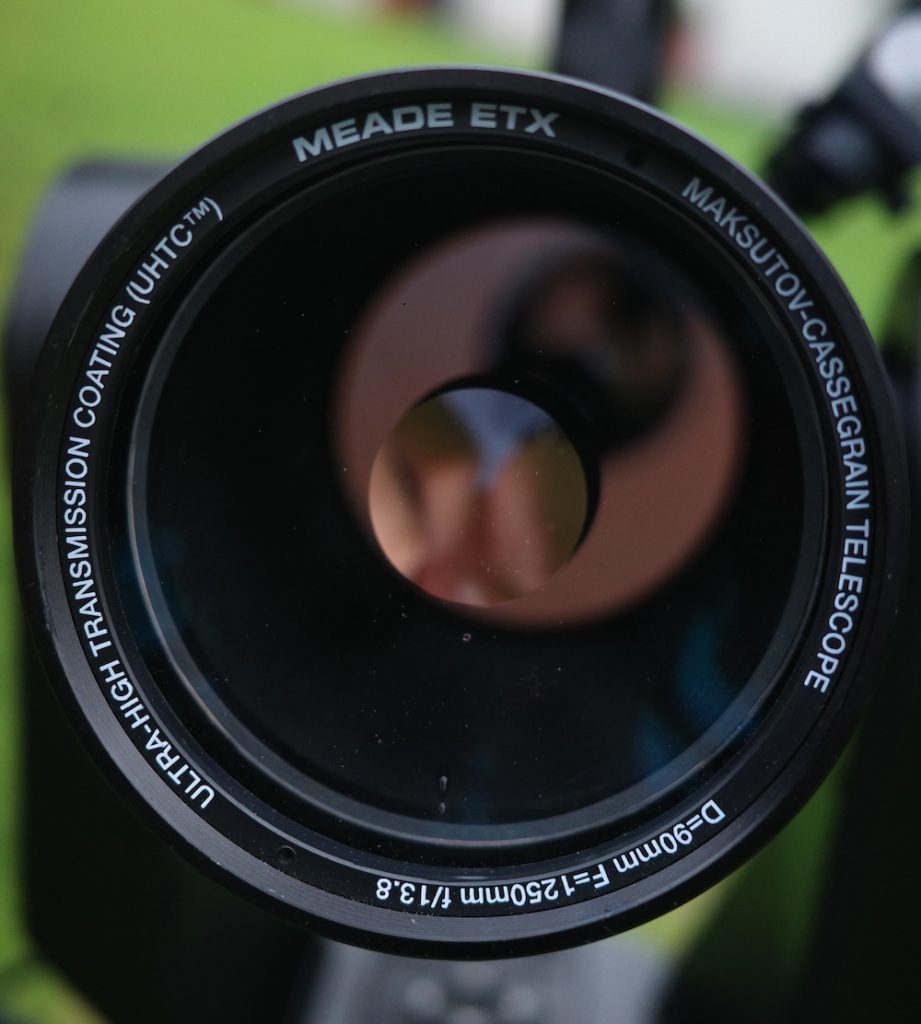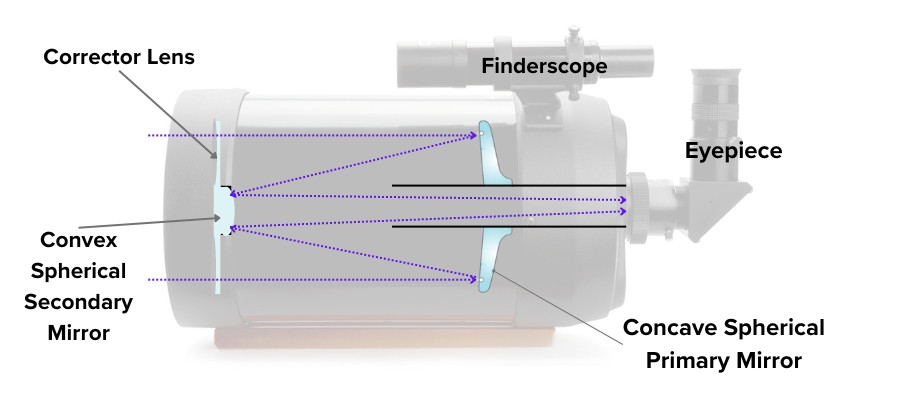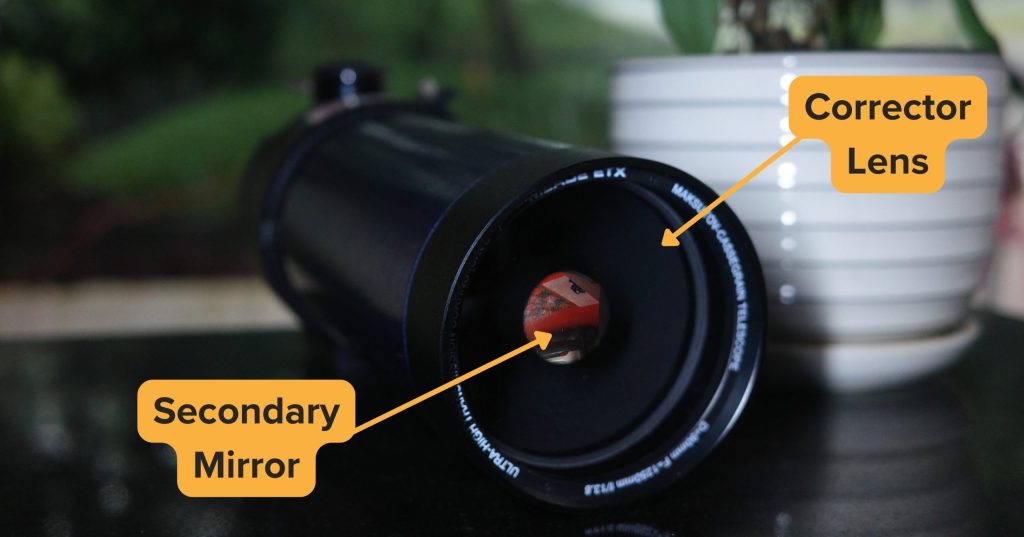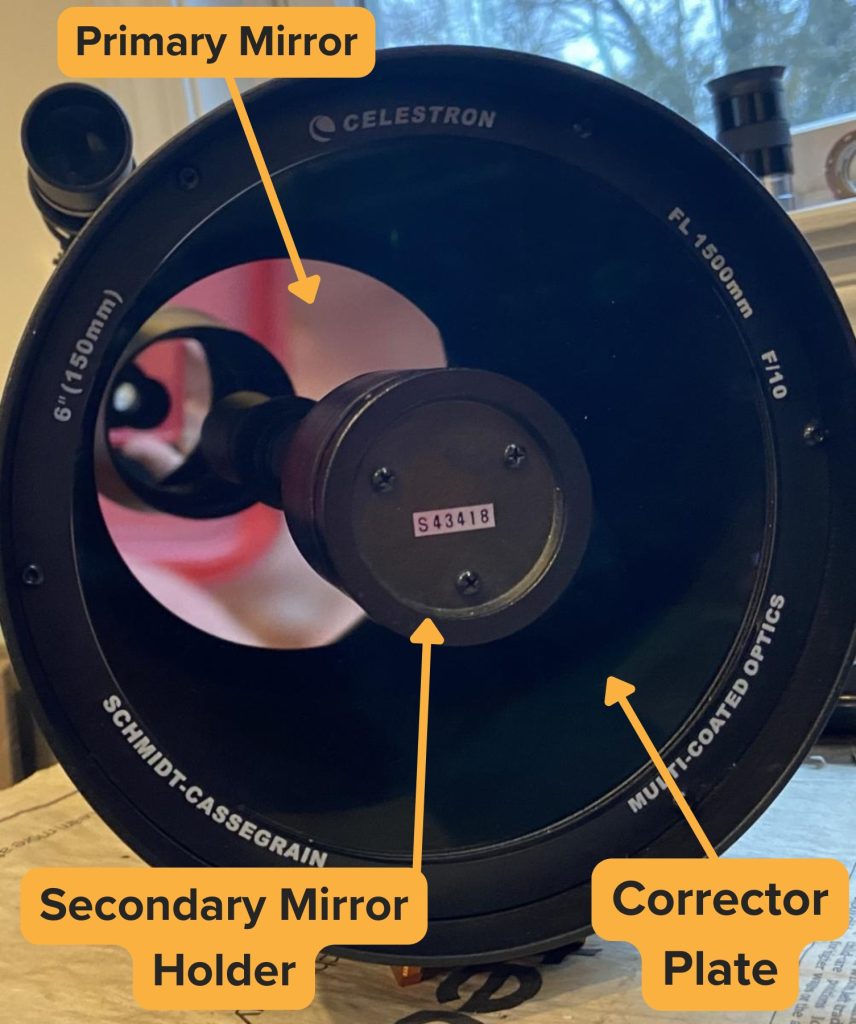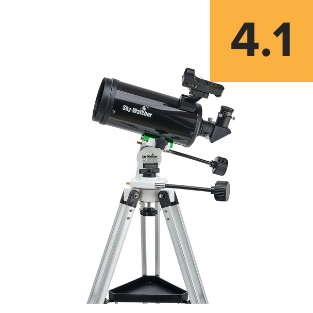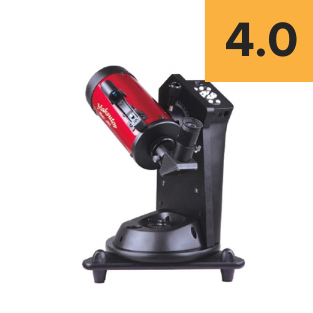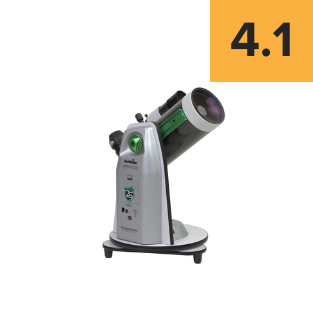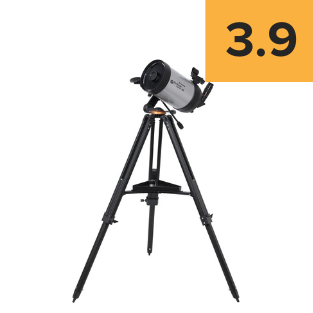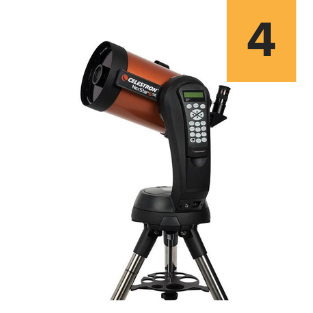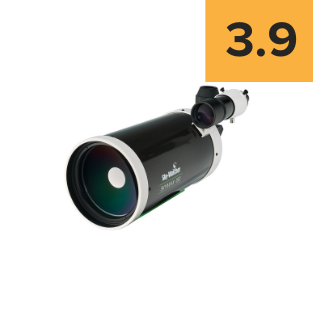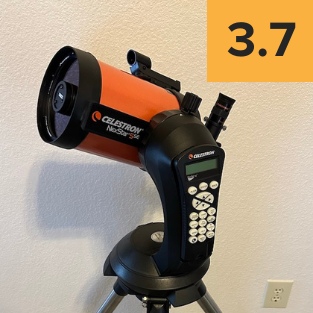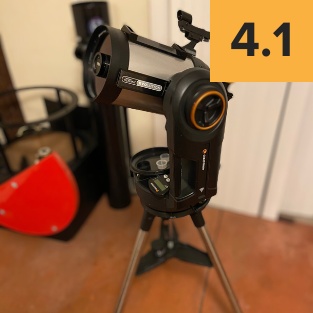Rank Category: Catadioptrics Between £2000 and £2500
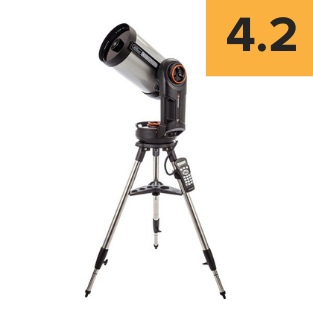
The NexStar Evolution mount features a built-in lithium battery, clutches to allow (theoretical) manual aiming when the scope is powered off, and a WiFi dongle along with a hand controller that allows us to run the scope with either the handset or our smartphone/tablet.
The Evolution is significantly sturdier than the NexStar 8SE model, which I don’t particularly recommend, and the whole scope breaks down into fairly manageable pieces for portability too. We also get a decent pair of 1.25” Plossl eyepieces to start out with.
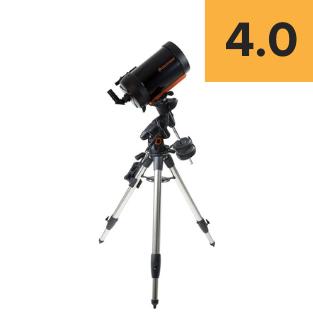
Rank Category: Catadioptrics Between £2500 and £3000

The Advanced VX GoTo mount is the smallest and lightest mount configuration that supports the C9.25 well for visual use. Being a German equatorial mount, even though it’s designed for deep-sky astrophotography, the C9.25’s weight exceeds the mount’s capacity for deep-sky astrophotography, and a smaller telescope would have to be swapped in on the AVX mount for that purpose.
The C9.25 Advanced VX package is ideal if you want a fairly large aperture scope and a setup that’s easily used for both viewing and imaging (planetary with the C9.25 and deep-sky with another telescope on the Advanced VX mount) and breaks down into fairly lightweight and compact pieces when disassembled.
What You Should Expect While Buying Catadioptrics
Though not all catadioptrics are necessarily of the Cassegrain, Maksutov, or Schmidt configuration, the following apply only to SCT and Maksutov telescopes, since those are the only ones readily available in most cases anyway.
- A Schmidt-Cassegrain usually costs at least twice as much as a Newtonian reflector boasting comparable capabilities, if not more, be it a new or used model.
- A Maksutov-Cassegrain is more than triple as much as a Newtonian reflector. Large Maksutovs above 7” in aperture are essentially custom products, and we rarely see them available for a reasonable price.
SCTs and Maksutovs use a very stubby tube due to the folded configuration of the Cassegrain optical layout, usually no more than 2-2.5 times the diameter of the primary mirror in physical length.
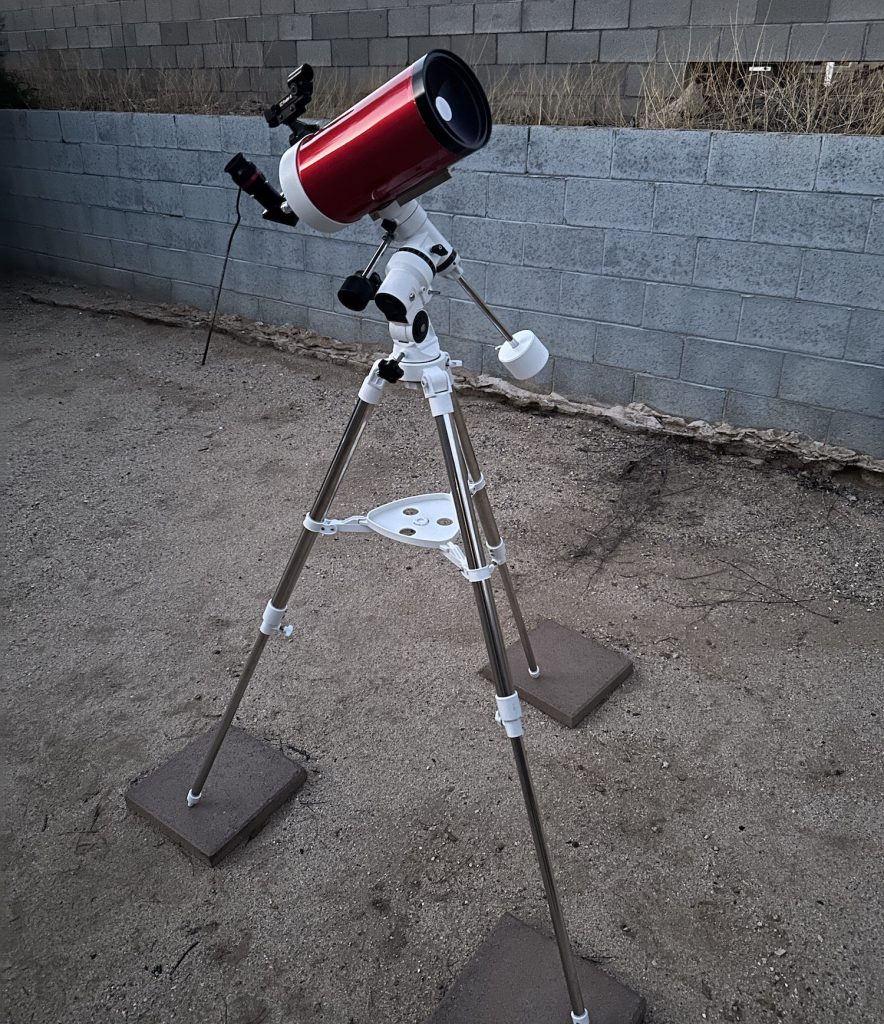
The sealed design of the optical tube keeps debris, airborne chemical contaminants, and other foreign objects out of Schmidt-Cassegrain and Maksutov-Cassegrain telescopes, meaning the mirror coatings are far less likely to corrode or even get dirty.
How The Catadioptric Design Affects Our Viewing/Imaging Experience
Because SCTs and Maksutovs have the secondary mirror attached to the corrector plate, no spider is needed to hold it in place. This means, unlike a conventional Newtonian or Cassegrain-type reflector, there are no diffraction spikes (bright, star-shaped patterns caused by light bending around the support structure holding the secondary mirror)
The stubby tubes and rigid hardware of SCTs and Maksutovs mean collimation (alignment of mirrors) is usually very steady.
- SCTs (if collimated correctly with everything tightened) rarely need collimation more than every few uses.
- Maksutovs may never need collimation at all owing to the secondary mirror often being part of the same piece of glass as the corrector.
While collimating an SCT or Maksutov isn’t as frequently required, we need to actually point the telescope at a bright star while making adjustments in order to do so. I’ve also seen many users make the mistake of adding thumbscrews or other modifications that do little but make catadioptric telescopes shift in collimation more frequently.
SCTs and Maksutovs’ corrector lenses don’t produce any chromatic aberration (colour fringing due to all colours of light failing to focus at the same point), as with a pure reflecting telescope. But we’ve noticed that some subaperture corrector lenses can still produce chromatic aberration.
SCTs are usually in the focal ratio range of f/8 to f/11, while Maksutovs are usually f/10 to f/16. Since, focal length = focal ratio x aperture, both SCTs and Maks have very long focal lengths as a result.
Longer focal length makes it easy to achieve high magnifications for lunar, planetary, and double star viewing without a fancy Barlow lens or ultra-short focal length eyepiece.
Magnification = Focal Length of Telescope / Focal Length of Eyepiece
Similarly, planetary imaging only requires a modest Barlow lens to achieve the required image scale. In its place, if we’re using an f/4 to f/6 Newtonian, we might need a 5x Barlow or even multiple stacked Barlows.
The internal moving-mirror focus system used on almost all Schmidt-Cassegrain and Maksutov-Cassegrain telescopes has unlimited travel but can have the primary mirror rock back and forth on the rod it slides on as we focus. This can cause “image shift”, where the view appears to bounce at high magnifications. Image shift affects most catadioptric scopes, at least in a minor fashion.
“Mirror flop” happens when the primary mirror tilts slightly over time, resulting in alignment issues, which ruin long exposure images. Many aplanatic SCTs designed for imaging have mirror locks to solve the mirror flop problem.
Compared to a Newtonian reflector, an SCT or Maksutov-Cassegrain requires more time to cool down due to the large secondary mirror (they’re even larger than that of a Newtonian reflector of the same aperture) also needing to cool down and the corrector plate trapping warm air inside the tube.
Maksutovs don’t have the mass of the secondary mirror to contend with, but instead, the thick corrector can completely trap warm air, requiring some sort of active ventilation system with 7” and larger apertures. I’ve personally witnessed it ruining the performance of most larger Maksutov scopes, even with countermeasures.
The large secondary mirror in the catadioptric obstructing the primary mirror has a negligible effect on light-gathering power but can reduce contrast at the eyepiece by essentially smearing the image slightly.
- Maksutov-Cassegrains rarely have a central obstruction below 25% or so.
- Even the most optimised SCTs have obstructions of around 33% or greater, and some have obstructions exceeding 40% when the baffle around the secondary is accounted for.
- By contrast, a typical Newtonian reflector, such as a Dobsonian intended for visual use, has an obstruction of around 20–30% only.
Central obstructions over 30% are noticeably detrimental to the image contrast, particularly with smaller telescopes. A central obstruction above 40% with telescopes like the Celestron C5 SCT essentially ruins high-resolution planetary viewing (the C5, as we’ve tested, is ironically capable of little else owing to its small aperture and limited field of view).
The several-meter-long focal length of SCTs and Maksutovs means we get a narrower field of view with any given eyepiece.
Additionally, we’ve experienced that 8” and smaller catadioptric scopes typically don’t illuminate the field of view of the widest possible 2” eyepieces, and some cameras, even if they technically allow the attachment of 2” eyepieces/cameras, further limit the field of view possible with such telescopes.
Larger catadioptrics still don’t allow us to use a 2” eyepiece and a focal reducer without vignetting, which means that the field of view is always cramped.
The long focal lengths of SCTs and Maksutovs place an incredibly high demand on tracking/guiding requirements for deep-sky astrophotography, while the slow focal ratio prohibits imaging without an extremely long exposure time.
Dedicated focal reducers are practically mandatory for imaging nebulae, galaxies, and star clusters with an SCT, while there are only limited options for Mak-targeted focal reducers.

